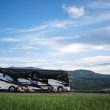Unless you are hunting or fishing, most people avoid going camping during the winter months. Taking yourself away from the environment that mankind has worked to create and improve upon over the course of thousands of years and leaving yourself vulnerable to the cold may not seem worth the view. While that is a completely understandable point of view, there are some that find more value in the experience they get during the winter months, be it the breathtaking landscape or the challenge of being able to survive the harsh conditions. In either case, it is always a good idea to know how to keep yourself warm without relying on your home’s temperature control unit. Even if you never plan on camping in the winter, having the tools and know how to keep you and your loved ones warm without the thermostat is always a good idea.
One of the most important things to focus on in winter conditions is sleep. If you are camping for pleasure, the last thing you want to do is spend the trip tired so you cannot truly enjoy the experience. Spending the entire time in a tired haze can not only cause arguments between camp-mates but cloud the memories you hoped to create, that caused you to put yourself in this situation in the first place. If you are doing this for a challenge or due to some kind of emergency, you want to have as clear of a mind as possible so that unnecessary injuries do not occur. Sleep allows us to recover and think clearly, making it high priority in this and any situation. It is highly important to know what equipment is best for your needs and why. Having the right equipment and knowing why it is important to have can make a big difference in the outcome of your trip.
Sleeping Bag
Before choosing a sleeping bag, it is important to know what temperature range you are comfortable sleeping in. Sleeping bags are typically rated at the lowest temperature that the average person would still feel comfortable sleeping in (ex. If it is 30 deg F outside and you have a bag rated at 30 deg F, the average person would feel comfortable sleeping in that bag). If you typically get cold while you sleep you want to get a bag that is rated for lower temperatures.
Sleeping bags come in a variety of shapes to cater to a variety of “sleeping styles”.
Since it is more often women that are “cold sleepers”, they make sleeping bags catered to them. The bags made for women are shaped to fit the curves of her body, so more heat is retained within.
For those that need some room to move when they sleep, the traditional rectangular or semi-rectangular shapes work best. These offer decent “wiggle room” while still keeping you relatively protected from the cold. The semi-rectangular bag is more efficient at retaining heat than the rectangular, as it is slightly snugger fitting.
The “Mummy” shaped bag is for those that can sleep comfortably without needing room to move much. If you can deal with the confined sleeping space, this bag is the most efficient at retaining heat and takes up the least amount of space. For backpacking, this style of bag is preferred due to the lightweight and little space it requires.
Be sure to pay attention to the type of insulation your bag has, not all bags work well in all conditions.
Goose-down bags are great for dry camping and backpacking. The feathers are easily compressed and very durable, so the bag can be stored smaller than one with synthetic insulation. As is the case with most non-man-made products, goose-down bags are more expensive. The main issue with this type of insulation is the lack of functionality in wet conditions. If a traditional goose-down bag gets wet, it loses its ability to insulate and dries slow, rendering it useless for keeping you warm while you sleep.
To keep from losing any customers that might encounter moisture on their trip, manufacturers began to offer water resistant goose-down insulation. This insulation has all of the same positive qualities of the traditional goose-down insulation, while adding the ability to function after encountering water. Unlike the traditional style of down filled bags, the feathers are treated with a water-resistant coating before being put in the bag.
Synthetic insulation is the most common and least expensive type used in sleeping bags today. Since it is most commonly made from polyester, it is non-allergenic, highly durable, quick-drying and maintains functionality if it gets wet (most athletic apparel is made from polyester). The main downside to this type of insulation is the bulkiness it creates. Unlike goose-down insulation, it is not packed down as easily and will require more room in storage.
Sleeping Pad
These pads provide an extra layer of protection between you and the ground. Heat spreads out evenly throughout all surfaces that are in contact with each other. As heat radiates from the energy source, it “looks” to equalize the temperature throughout all surfaces it contacts. This is why you can boil water in a pot by putting it on a stove and why you burn yourself touching that same stove. With the ground being a lower temperature than your body, you become the “stove” and the Earth becomes the pot of water. Being that you will never put out enough heat to bring the temperature of the Earth’s surface up to match yours, the heat dissipates and your body has to work harder to maintain the temperature it needs to survive. This means your body burns through the food you ate faster and your stored fat until you either refill it or run out and “expire”
Sleeping bags provide some relief from heat dissipation, but more is better in this case. By laying on a sleeping pad you are limiting the surface are for the heat from your body to attempt to equalize with. While the mat is on the ground and the heat from it will attempt to equalize with the Earth’s surface, it will slow the process of using your body heat directly, down. Sleeping bag manufacturers know this and most assume you will have your bag on a mat during use, when they rate their bags.
Air pads are usually the comfiest to sleep on when camping. They contour to your body well and do not lose “fluff” from prolonged use. Due to their lack of other support, they are typically bulkier and thus require more room during use. In addition to being bulkier, air pads are the least efficient at insulating you from heat loss of all types of sleeping pad.
Closed-cell foam pads are at the opposite end of the sleeping pad spectrum. These pads are made of dense foam with tiny closed air pockets throughout. With closed-cell pads, you are more insulated from the ground and they are more durable and inexpensive. The downside of this type of pad is that they are far less comfortable and bulkier during transport than the air pad.
Self-inflating pads use both foam and air for insulation and comfort. These pads are filled with open-cell foam that draws air into the nozzle (once opened) to fill the pad for use. The self-inflating pad combines the best of both worlds with the comfort of the air pad and the protection of the closed-cell pad. You can adjust the firmness by letting in or releasing air through the nozzle. Though these are the most versatile type of pad, they do have drawbacks. Like the closed-cell pad, they are bulky in transport which can cause issues storing them comfortably while backpacking. Like the air pad, they run the risk of being punctured, causing any level of comfort they provided to be lost over time, depending on the size of the hole.
While there are many aspects to camping in the winter months, getting good sleep is one of the most important. We will be covering other aspects such as tips for staying warm when backpacking, finding food, building and choosing shelter (ex. Tents) and others in later posts. Don’t miss out on these and other posts by subscribing to our blog and checking out some of our past posts.
Join Us
As always, come back every day on the RVUSA blog for the RV Find of the Week on Monday, Travel Destination Tuesday, Featured RV Dealer on Wednesday, Throwback Thursday, and RV Tips and Tricks on Friday. Leave us a message below if you have any thoughts, memories or comments. We’d love to hear from you! If you’d like to receive our daily blog posts directly in your inbox, click here to join our free email list.






